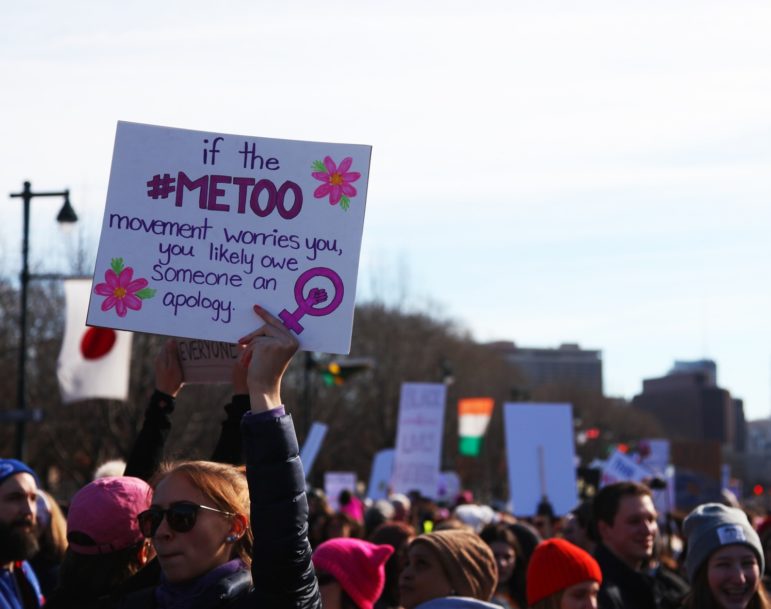
Meredith Nutting
'With the rise of #MeToo, I'm so encouraged by the broader conversations we are finally having as a culture about so many of these critical issues and about defining healthy sexuality more broadly.'
As a Sexuality Education Alliance of New York City (SEANYC) Youth Advisory Council Member, I advocate for comprehensive, age-appropriate sex ed in all of our city’s schools. Growing up in New York, I know I’m lucky that I was able to receive sex education in my school at all, unlike the countless students across the United States who receive nothing but abstinence-only programming.
Even so, I found my sex ed experience to be lacking, with an emphasis on condom use and the dangers of STIs, but no mention of consent, bodily autonomy, healthy relationships, LGBTQ identity, or rape culture. With the rise of #MeToo, I’m so encouraged by the broader conversations we are finally having as a culture about so many of these critical issues and about defining healthy sexuality more broadly. But it’s not enough—we must move from conversation to movement-building. It is high time we implement comprehensive, affirming, and medically accurate sexuality education in all New York City schools.
While New York State recommends that sexual health education be taught once a semester in middle school and once in high school, thousands of students do not receive even this bare minimum. Most young people first learn about sex from the Internet or their peers, picking up, passing on, and internalizing inaccurate and even harmful understandings of sexual health along the way.
Studies show that comprehensive sexuality education is the most effective way to reduce rates of unintended pregnancy, HIV, and other STIs among adolescents. New York City parents already strongly support sex education for grades K-12. Despite this, our city does not yet have a comprehensive sex education policy in place for all grades as recommended by National Sexuality Education Standards.
My first experience with sex ed came in sixth grade, with a program called Nightstar. We acted out scenarios that revolved around sexual violence, were given some tips on how we may be able to handle these situations, and were told about menstruation. While I appreciated the program, I did not find it particularly effective or informative. By sixth grade, many students are already curious or even, because of the Internet, somewhat informed about sex, so it seemed late to start talking about these issues. Sex ed needs to catch up to the circumstances under which adolescents are exposed to and learn about sexuality today, and starting at sixth grade, when some students may already even be in relationships, just doesn’t cut it.
My eighth grade sex ed program, Family Living, was much more comprehensive. We had open discussions about sex, relationships, and sexual health. We could ask questions anonymously via a question box, and discuss them as a group. We were also were given a challenge to keep an “egg-baby” alive for a week and talked about that experience together.
Still, this program would have greatly benefited from a conversation about queer families and the many different ways parenting can look. The best part of this sex ed program was the sexuality educators from Planned Parenthood who met with all the female students after school. They empowered us with information about all kinds of birth control and their effectiveness, how we could access it anonymously, and told us about emergency contraception and how we could find safe, affordable abortion care should we ever need it.
All students deserve this informative and judgement-free sexual health education.
A recent SEANYC report from the 2015-2016 school year showed that 59 percent of students polled did not learn about consent in school or elsewhere, 63 percent did not learn about gender identity or expression, and only 66 percent said they knew where to go for sexual and reproductive health care services. Students like me shared that their schools should have a dedicated health teacher providing sexual health education and more health resources.
It’s clear that gaps in our city’s sexual health programming have long-standing effects on the overall wellbeing of our community. Women aged 16 to 24 experience the highest rate of intimate partner violence of any group and 1 in 10 New York City teenagers report having experienced dating violence in the last year alone. 1 in 4 students report being bullied because of their gender identity. Moving forward, sexual education for all NYC students must include communication and consent, practical information about health care services and access, and anti-bullying measures with a focus on social media.
If we are truly committed to building a future where all people, regardless of gender, are empowered to live with agency and free from violence, it starts with comprehensive sex education and large-scale change in our schools. It starts with expanding our curriculums and making sure our health educators are highly skilled. It starts with accountability from our Department of Education and with a concrete and transparent implementation plan.
As New Yorkers, we should be leaders when it comes to sexuality education. New York City youth like me deserve comprehensive, age-appropriate sex education in every single school from kindergarten through twelfth grade. We know it works and we know it is desperately needed.
Alessia Milstein is a senior in high school, and a member of the Sexuality Education Alliance of New York City’s Youth Advisory Council.








